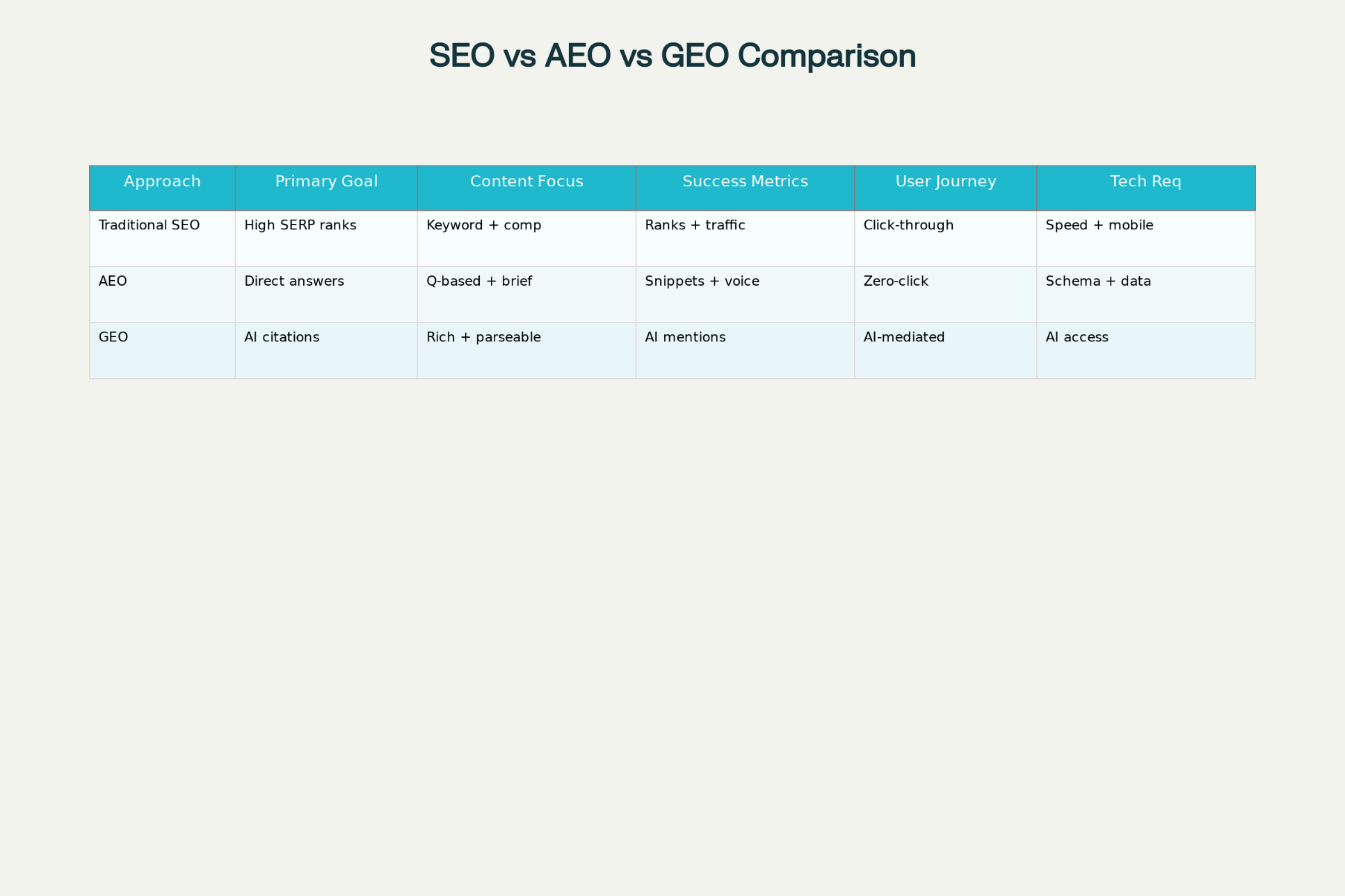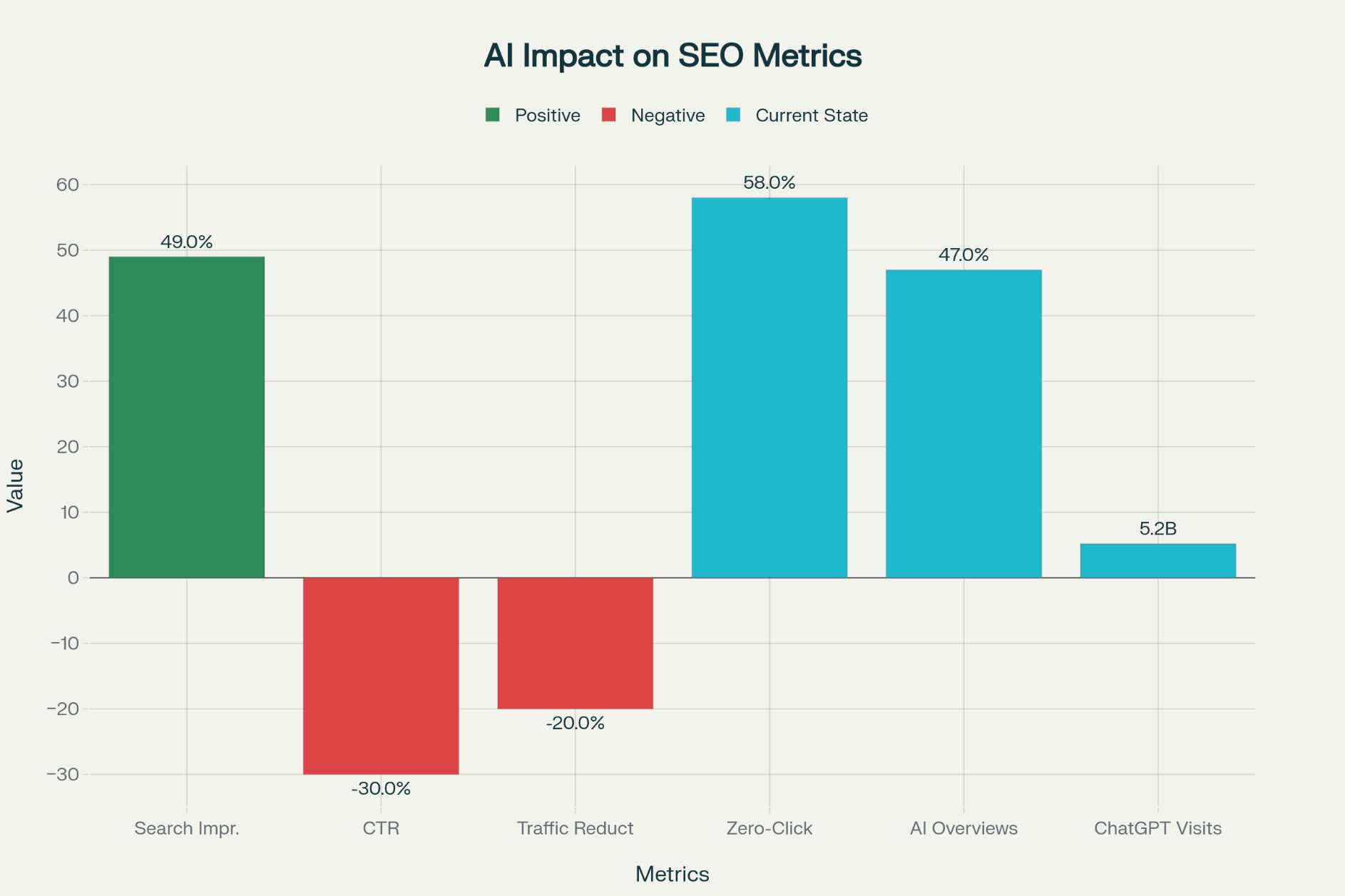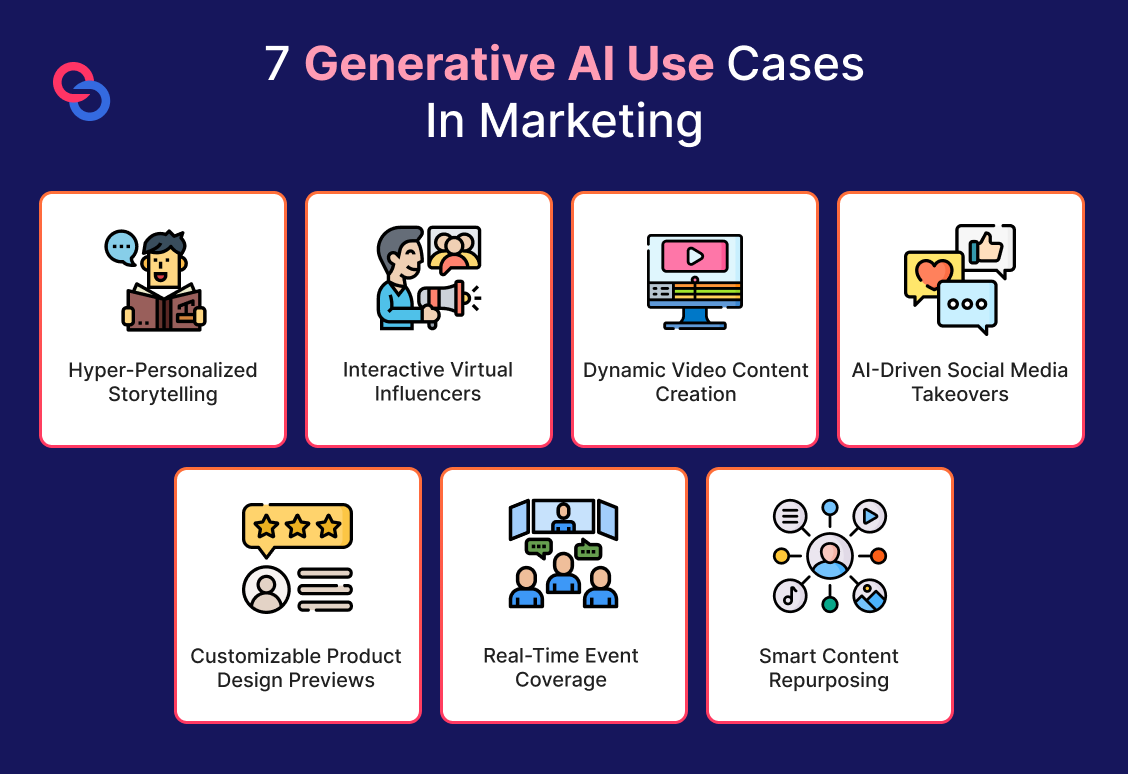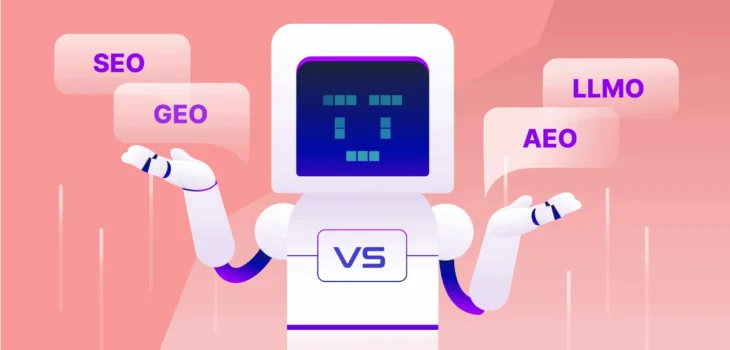For decades, SEO was a game of keywords and backlinks. You found the right terms, sprinkled them across your site, and built authority.
It was a relatively straightforward, if competitive, landscape. But the digital world is undergoing a seismic shift. The classic Google search bar is no longer the sole gateway to information. Voice assistants answer our questions, maps guide our purchases, and artificial intelligence is rewriting the rules of content creation and discovery.
This evolution forces us to ask a critical question: What is the true future of SEO? Is it the hyper-local precision of Geo-based SEO (GEO), the conversational intelligence of Answer Engine Optimization (AEO), or the revolutionary power of Artificial Intelligence (AI)? The answer isn’t a choice between them, but a strategic fusion of all three. The future belongs to those who can master the synergy of GEO, AEO, and AI.
Deconstructing the New SEO Trinity
To understand the future, we must move beyond seeing these as separate entities. There are three interconnected forces shaping a new, more intelligent, and intuitive web.
GEO (Geo-Based SEO): The World is Your (Local) Oyster
GEO is no longer just about having your business name, address, and phone number (NAP) consistent. It has evolved into a dynamic, context-aware system that connects online intent with real-world action.
-
Beyond the “Near Me” Search: While “near me” queries are still vital, GEO now encompasses proximity-based notifications, integration with mapping apps (Google Maps, Waze), and local inventory feeds. Your SEO strategy must ensure your business appears when a user’s smartphone anticipates their need.
-
The “Local-First” Index Hypothesis: We are moving towards a search index that prioritizes local relevance by default. Even for non-geo-specific queries, search engines may weigh locally popular or authoritative sources more heavily, making local link-building and community engagement crucial.
-
Visual GEO: The AR Integration: The next frontier is Augmented Reality (AR). Imagine pointing your phone at a street and seeing pop-up reviews and menus for restaurants. Optimizing for visual search and local AR platforms will be a key GEO tactic.

AEO (Answer Engine Optimization): Winning the Zero-Click Search
AEO is the strategy of optimizing content to be the direct answer to a query, often read aloud by a voice assistant or displayed in a “Featured Snippet.” It’s about satisfying searcher intent instantly, sometimes without them ever clicking your website.
-
The “Crystal Ball” Paradigm: Modern AEO isn’t just about answering questions; it’s about anticipating the next question. Your content should be structured to provide a complete journey. If you answer “how to boil an egg,” your page should also seamlessly address “how long to boil a soft-boiled egg” and “why do my eggs crack when boiling?”
-
Structured Data is Your Megaphone: To be understood by answer engines, you must speak their language. Schema markup (JSON-LD) is non-negotiable. It explicitly tells search engines what your content is about—a recipe, a FAQ, an event—increasing its chances of being pulled for a direct answer.
-
Conversational Tone & Context: AEO requires a shift from keyword-stuffing to topic-clustering. Write in a natural, conversational tone that mirrors how people speak to their devices (e.g., “Hey Google, what’s the best way to clean a stainless steel sink?”).
AI (Artificial Intelligence): The Architect of Modern SEO
AI is not just a tool; it is the new foundational layer of search itself. From Google’s Gemini and RankBrain to OpenAI’s ChatGPT, AI is both the player and the referee.
-
AI as the Search Engine’s Brain: Search algorithms are now AI-powered models that understand user intent, context, and semantic relationships between words at a superhuman level. They reward comprehensive, user-friendly content that demonstrates Expertise, Authoritativeness, and Trustworthiness (E-E-A-T).
-
AI as Your Co-Pilot, Not Your Replacement: The smartest SEOs are using AI for tasks like clustering keywords by intent, generating content outlines, summarizing complex data, and personalizing user experiences at scale. The key is to use AI for augmentation—handing over the heavy lifting while a human provides the strategic direction, nuance, and brand voice.
-
The Rise of Generative Search Experiences (GSE): Google’s Search Generative Experience (SGE) is a glimpse into the future. Instead of ten blue links, users get an AI-generated snapshot of the answer, synthesizing information from multiple sources. Your SEO goal shifts from ranking #1 to being one of the sources the AI deems worthy of synthesizing.

The Synergy: Why 1+1+1 = 10
The true power is unlocked when GEO, AEO, and AI work together. Imagine this scenario:
A user in Denver asks their voice assistant, “What’s a good plant for a sunny balcony that’s hard to kill?”
-
AI understands the complex intent: a gardening recommendation (product), for a balcony (residential, space-constrained), that is sunny (environmental condition), and low-maintenance (feature). It also understands the user’s location (Denver, climate zone 5b/6a) via GEO.
-
The assistant responds using AEO principles: “In your Denver climate, a Sedum ‘Autumn Joy’ is a great, low-maintenance option for sunny balconies. It’s drought-tolerant and thrives in full sun. Would you like me to find local nurseries that have it in stock?”
-
The GEO component then kicks in again, providing a list of local garden centers with available inventory, driven by local SEO optimization.
In this journey, all three elements are inextricably linked, providing a seamless, intelligent, and actionable result.
Your Action Plan for the Trifecta SEO Strategy

-
Audit for the Trinity:
-
GEO: Claim and optimize your Google Business Profile with high-quality photos, accurate services, and Q&A engagement. Build local citations and garner genuine reviews.
-
AEO: Identify question-based keywords in your niche. Create comprehensive, pillar-style content that answers these questions fully. Implement FAQ and How-To schema markup.
-
AI: Use AI tools to analyze your content for E-E-A-T signals, identify content gaps in your topic clusters, and help with meta-description generation at scale.
-
-
Create “Omni-Answer” Content: Develop content that serves multiple intents simultaneously. A page on “Best Running Shoes for Flat Feet” should include local stockists (GEO), a direct answer to “what running shoes are good for flat feet?” (AEO), and be structured with clear headings and data for AI comprehension.
-
Embrace the E-E-A-T Imperative: With AI evaluating content quality, demonstrating first-hand experience and authoritative knowledge is paramount. Use original data, expert quotes, and real-life case studies to build trust with both users and algorithms.
The Future is Contextual, Conversational, and Cognitive
The debate is not whether GEO, AEO, or AI will dominate the future of SEO. The future is already here, and it is a harmonious blend of all three. The goalposts have moved from simply ranking for a keyword to owning a contextual, conversational, and cognitive space in the user’s journey.
The businesses that will thrive are those that stop optimizing for spiders and start architecting for intelligence—both artificial and human. By strategically integrating the precision of GEO, the clarity of AEO, and the power of AI, you won’t just be playing the SEO game; you’ll be defining it.
Frequently Asked Questions (FAQ)
Q1: Isn’t AEO just Voice SEO with a new name?
While Voice SEO is a significant part of AEO, AEO is broader. It encompasses all direct answers, including Google’s Featured Snippets and the informational boxes in search results, regardless of whether the query was typed or spoken.
Q2: If AI like ChatGPT can answer everything, why do I need a website?
AI models need to pull information from reliable, up-to-date sources. Your website is that source. By creating expert content, you increase the likelihood of being cited by these AI systems, which is the new form of “ranking.” It drives brand awareness and, ultimately, trust and traffic.
Q3: How can I use AI in my SEO without getting penalized for duplicate or low-quality content?
The key is to use AI as a brainstorming and drafting tool, not a content copier. Always heavily edit, fact-check, and infuse AI-generated drafts with your unique expertise, brand voice, and original insights. Human oversight is the critical ingredient that prevents penalties.
Q4: My business is purely online/e-commerce. Do I still need to worry about GEO?
Yes, but in a different way. For an e-commerce site, GEO can mean ensuring your shipping information and policies are crystal clear and easily accessible (a strong AEO play). It can also involve optimizing for geo-modified keywords if you serve specific countries or regions, and using local schema for your business’s legal address to build trust.
Q5: What’s the single most important thing I can do right now to prepare for this future?
Shift your mindset from “keyword targeting” to “topic authority.” Build comprehensive content hubs (pillar pages and clusters) that thoroughly cover a subject. This approach naturally incorporates GEO, AEO, and AI-friendly elements, making your site a valuable resource for users and algorithms alike.
Q6: Are traditional link-building and technical SEO still important?
Absolutely. Technical SEO (site speed, mobile-friendliness, crawling) is the foundation—a slow, broken site won’t be ranked well by any algorithm, AI or not. Link-building is a core signal of E-E-A-T, demonstrating that other authorities on the web trust your content. These fundamentals enable the advanced strategies of GEO, AEO, and AI to work effectively.



